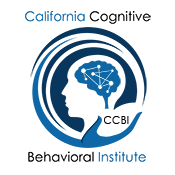BATTERED WOMAN AND CHILD SYNDROME DEFINITIONS
The battered woman syndrome (BWS) expands the concept of legal self-defense. This defense holds that a battered woman is virtually held hostage in a violent household by a man who isolates and terrorizes her, convincing her that if she leaves he will track her down and kill her. The American Psychiatric Association conceptualizes BWS as the development of a set of personality attributes brought on by abuse that render the victim more able to survive in the relationship and less able to escape it.
Three components of BWS include behavior brought on by victimization, learned helplessness behavior, and self- destructive coping behavior. Because battered and nonbattered women are not significantly different, expert testimony during a trial should focus on the impact of violence and the woman’s perception of threat. It is also important to recognize that the criminal justice system does not protect women from abuse. A battered woman may not be able to obtain a restraining order or keep it in effect.
BWS begins as an abusive cycle with three stages. First, the abuser engages in behaviors that create relationship tension. Second, the tension explodes when the abuser commits some form of abuse: physical, psychological, emotional, sexual, or otherwise. Third, the abuser tries to fix his wrongdoing and apologizes.
Legal requirements is that a woman prove she has experienced 3 times or more cycle of violence:
Cycle stage 1 – Tension Building
Cycle stage 2 – The “event” of abuse (or events)
Cycle stage 3 – Honeymoon stage (abuser saying they are sorry or abuse
being temporarily stopped until it begins again. Also known as “re-grooming” time
Creating a timeline of abuses experienced by a victim over the years of the relationship help her prove she has BWS along with assessments given by an expert in domestic violence.
Battered child syndrome (BCS) is found at every level of society, although the incidence may be higher in lower-income households, where adult caregivers may suffer greater stress and social difficulties and have a greater lack of control over stressful situations. Other risk factors include lack of education, single parenthood, and alcoholism or other drug addictions. The child abuser most often injures a child in the heat of anger or during moments of stress. Common trigger events that may occur before assaults include incessant crying or whining of infants or children; perceived excessive “fussiness” of an infant or child; a toddler’s failed toilet training ; and exaggerated perceptions of acts of “disobedience” by a child. Sometimes cultural traditions may lead to abuse, including beliefs that a child is property, that parents (especially males) have the right to control their children any way they wish, and that children need to be toughened up to face the hardships of life. Child abusers were often abused as children themselves and do not realize that abuse is not an appropriate disciplinary technique. Abusers also often have poor impulse control and do not understand the consequences of their actions.
Symptoms
Symptoms may include a delayed visit to the emergency room with an injured child; an implausible explanation of the cause of a child’s injury; bruises that match the shape of a hand, fist or belt; cigarette burns; scald marks; bite marks; black eyes; unconsciousness; lash marks; bruises or choke marks around the neck; circle marks around wrists or ankles (indicating twisting); separated sutures; unexplained unconsciousness; and a bulging fontanel in small infants.
Emotional trauma may remain after physical injuries have healed. Early recognition and treatment of these emotional “bruises” is important to minimize the long-term effects of physical abuse. Abused children may exhibit:
- a poor self-image
- sexual acting out
- an inability to love or trust others
- aggressive, disruptive, or illegal behavior
- anger, rage, anxiety , or fear
- self-destructive or self-abusive behavior
- suicidal thoughts
- passive or withdrawn behavior
- fear of entering into new relationships or activities
- school problems or failure
- sadness or other symptoms of depression
- flashbacks or nightmares
- drug or alcohol abuse
Sometimes emotional damage of abused children does not appear until adolescence or even later, when abused children become abusing parents who may have trouble with physical closeness, intimacy, and trust. They are also at risk for anxiety, depression, substance abuse, medical illnesses, and problems at school or work. Without proper treatment, abused children can be adversely affected throughout their life.

